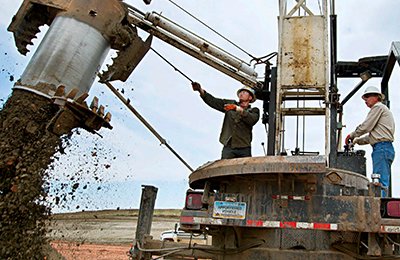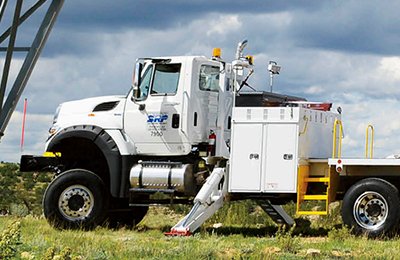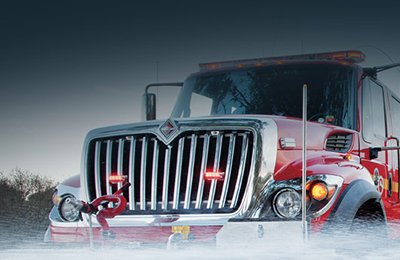Workstar little rock
It’s an hour before dawn, and the ramps at Little Rock National Airport are buzzing.
Blue lights twinkle like stars along the taxiway as a 737 commercial jet approaches in the distance and slowly rolls to a stop at the gate. The 9,000-pound, barrel-shaped engine lets out one last whoosh, and a small army descends upon the aircraft. Conveyor belts on wheels are quickly moved into position. Tow tractors pulling trails of metal baggage carts putter back and forth. Ground service personnel circle the hull and inspect the tires.
Idling on the periphery of this controlled chaos is a 5,000-gallon WorkStar® 7400 refueling truck, flickering strobe lights announcing its presence. At the wheel is line service technician Danny York. Of all the behind-the-scenes jobs required to keep the commercial airline industry flying smoothly, his may be the most critical. If he doesn’t pump jet fuel into this big bird pronto, those busy travelers pacing around inside the terminal aren’t going anywhere.
“The airlines rely on us to put fuel in their planes when they need it,” says Theron Murray, manager of Airport Services Inc. (ASI), the family-owned company that has handled Little Rock National’s fueling operations since 1972. “If we can’t depend on these trucks to fire up at 3 a.m. when we get here, we’ve got serious issues.”
Thanks to the reliability of his WorkStar, there will be no late departures on York’s watch. The burly 42-year-old emerges from the cab, slings a fireman-size hose over his shoulder and drags it 45 feet until he’s standing directly under the plane’s hulking, four-ton wing. He inserts the nozzle into the tank. After a few trips back and forth to program the pump pressure on the truck’s power take-off, as well as to secure his “dead man” switch—a handheld safety device that closes the valve if York is pulled away from his post or becomes otherwise distracted from the job—the fuel begins to flow.
This morning’s brutally early passenger flight to Atlanta requires roughly 1,600 gallons—but from the airline’s perspective, it’s the weight of that fuel that matters. It’s not like the pilot sticks his head out the window and yells, “Fill her up!”
Actually, a complex matrix of elements including passenger load, cargo weight and trip distance all factor into the amount of fuel that ASI deposits during a typical stop. And even at a small, 12-gate airport like Little Rock’s, the numbers add up. ASI’s four on-site storage tanks hold 160,000 gallons of jet fuel, and its fleet of four trucks cranks out more than 1 million gallons every month.
But for ASI’s 14 employees, dispensing highly flammable liquids into multimillion-dollar jetliners is the easy part. The real challenge is navigating the gauntlet of traffic—not to mention icy roads and never-ending airport construction projects—as their vehicles crisscross the airport operations area to and from gate assignments. In a business where safety is paramount, they require trucks that deliver excellent visibility and can turn on a dime. And that’s exactly what they say they get every day from the WorkStars now included in their fleet.
York, a former bank computer operator who started driving fuel trucks five years ago, says that with previous trucks, it wasn’t unheard-of for a driver to back up over an airline’s belt loader and drag it across the ramp. “But these trucks have a really great field of vision,” he says in a no-nonsense Arkansas drawl, citing the expansive windshield’s rounded corners, the adjustable high-riding seats and a body that sits a few feet back from the cab and allows for an almost 180-degree vantage point. “We need to get in and get out without obstructing any airline procedures. Seeing everything around you is everything for this job.”
The nine International® trucks (including five WorkStars and two DuraStars®) that support Little Rock National and the private airfield across the runway that is operated by ASI’s parent company, Central Flying Service Inc., are specially designed for this unique application by International and its body upfitter, Garsite Aviation Refueling Equipment.
Based in Kansas City, Kans., Garsite is the largest company of its kind in the U.S., building aircraft refuelers as well as hydrant dispensers and above-ground storage tanks and fueling systems. Its refueler bodies, built on International chassis, serve airports, airlines, oil companies and other fuel suppliers all over the globe.
Diamond International in nearby Kansas City, Mo., regularly receives truck bids from Garsite for one of its aviation customers. The chassis design is dictated by the size of the tank it needs to support—typically 3,000, 5,000 or 7,000 gallons. But in many cases, a refueler requires custom equipment such as hydraulic lifts or additional apparatus behind the cab. “There are several configs that can add weight and make the spec more complex,” says Shawn O’Connor, sales rep at Diamond International.
Along with the durability, the versatility of the International portfolio is a huge plus for Garsite, which typically utilizes the WorkStar for 5,000-gallon-and-up refuelers and the DuraStar or TerraStar® for smaller applications. But all the trucks Garsite sells share one trait—they operate differently from their on-road counterparts. Refueling vehicles typically run for nearly 24 hours straight with almost zero downtime. And while they rarely exceed 20 mph, the engines regularly reach 1,200–1,500 rpm to muscle up anywhere from 300–600 gallons a minute, depending on design, from their pumping systems. It’s tough work, but the International vehicles that dominate their truck builds are up to the challenge, says Garsite’s technical manager, Fred Stipkovits.
“For our application, hands-down there’s no better chassis,” he says. In fact, he points out that Garsite’s refurbishment facility in Ohio frequently sees many early-’90s model International® trucks that are still running like new. “These trucks don’t have high mileage, but they have thousands and thousands of hours on them. They are all well worth the investment. If a customer calls us for a truck, chances are it’s going to be an International.”
Back in ASI’s fueling office, Murray scrolls down the list of flight times on his computer. This list gives him a gauge on the next refueling rush. Zipping up his bright red Arkansas Razorbacks jacket to shield him from the January cold, the easygoing 46-year-old reminds another line service tech, a white-goateed Air Force veteran named Don Brunette, about the upcoming 8:45 a.m. departure. “Our trucks run pretty much around the clock,” says Murray. “That’s a lot more wear and tear than a truck running up and down the highway. It takes a toll. Especially on the servicing end.”
ASI handles minor maintenance—broken hoses, leaky pumps—from a small garage on the outskirts of the airport. For larger issues, ASI calls on Diamond International’s local outpost in Little Rock. “We’ve worked with International locally for probably 30 years. If I call them, they’re here the same day.”
Across the runway, Central Flying Services has a private fixed-base airfield that’s among the biggest and busiest in the nation. Two 5,000-gallon WorkStars, as well as a 3,000-gallon model, support the jet engine- and turboprop-powered charter and corporate jets that buzz in and out. A DuraStar chassis carries a low-bed, 1,200-gallon aviation gas-fuel truck that services smaller aircraft like the single-engine Cessnas that dot the west end of the sprawling, 40-acre grounds equipped with multiple hangars, two terminals and a popular restaurant. Twenty-five employees serve the 50 to 150 total small aircraft that take off and land each day—all of which need fuel.
Safety concerns are just as vital on a private airfield as at a commercial airport. But because the fuel trucks serve the actual owners of the aircraft (several Fortune 500 CEOs and former president Bill Clinton are among the luminaries who pass through), the image the trucks project takes on added importance. Marty Hyde, quality control and training supervisor for Central Flying Services, says the sparkling chrome grill and “badass look” of the International trucks speak volumes.
Looks are important, according to Hyde, but the real mandate is ensuring the trucks are humming and operating at their full potential to service these planes. Especially when an entire airport is relying on them.



